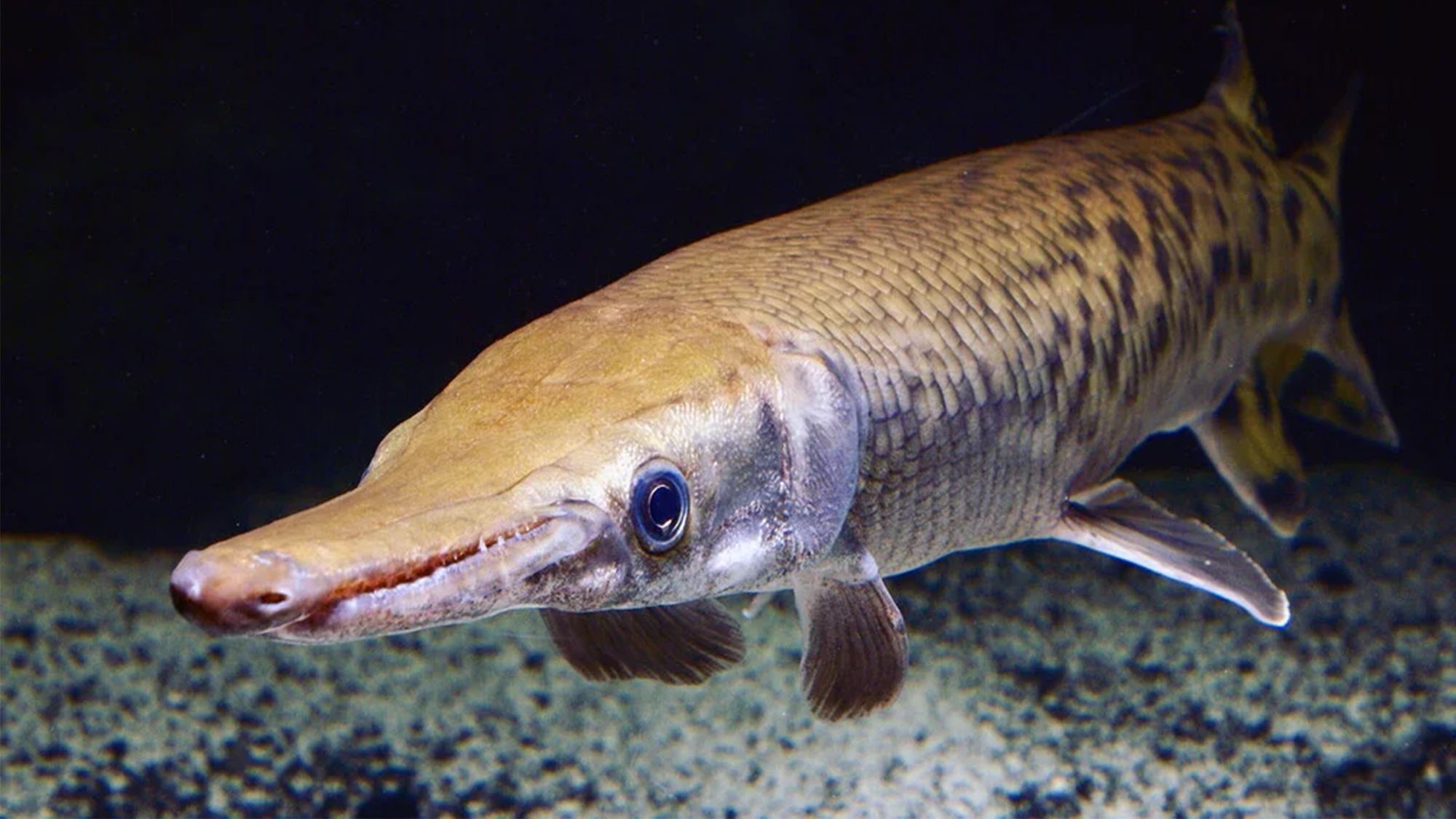

If you take a look at a horseshoe crab, you are essentially peering back in time millions of years. Animals like horseshoe crabs, coelacanths, and the duck-billed platypus are what Charles Darwin called “living fossils” since alive specimens show very few physical differences from their ancestors in the fossil record dating back millions of years.
[Related: A new evolutionary theory could explain the mystery of shrinking animals.]
Now, an ancient group of ray-finned fishes called gars may be the ultimate living fossils, evolving slower than any other of these vertebrates. A study published March 4 in the journal Evolution found that they have the slowest rate of molecular evolution among all jawed vertebrates and its genome changes much more slowly than other animals.
What are gar?
There are seven known species of gar. They are found in North America and can live in fresh, brackish, and salt water and commonly live in slow-moving bodies of water like estuaries. They have bodies shaped like darts and a long beak that acts like a pair of forceps. They also lay green colored eggs that are highly toxic to any predators who want to eat them.
All seven living species of gar species are nearly identical to the earliest known fossil gars. These specimens date back about 150 million years ago to the Jurassic period. As early as 100 million years ago (Mid-Cretaceous period) one of the two living major lineages of gars began to appear in the fossil record.
Looking at hybridization
In this new study, the team analyzed a dataset containing 1,105 exons–DNA’s coding region–from a sample of 471 jawed vertebrate species. They found that the gars’ DNA consistently evolves up to three times more slowly than any other major group of vertebrates. Sturgeon and paddlefish also showed slow rates of change, but their rate of changes was not as relaxed as gar.
Researchers then looked at a process called hybridization, where two different species produce viable offspring that have the ability to reproduce when they reach maturity. For example, a horse and a donkey are two different species, but they can mate and produce mules. However, mules are usually born sterile and can’t reproduce. Some gar species can mate and their offspring will remain fertile when they reach sexual maturity.
The team looked at the alligator gar and longnose gar, two different gar species found in the Brazos and Trinity River systems in Texas. Both species last shared a common ancestor at least 100 million years ago, yet are still producing viable and fertile babies, but not new species. This successful reproduction by two different species of gar is likely linked to how slowly their DNA changes and keeping their numbers of species at only seven.
“The slower a species’ genome is mutating, the more likely it is that it will be able to interbreed with a separate species that it’s been genetically isolated from over a long stretch of time,” study co-author and Yale University PhD student Chase D. Brownstein said in a statement.

According to the study, gars have the oldest identified parental split among all animals, plants, and fungi that can produce offspring that can survive and reproduce. The previous record holders were two fern species and the gar’s common ancestor is about 60 million years older than the shared ancestor of both ferns.
Not an evolutionary accident
The team believes that gars have an unusually strong DNA repair apparatus. This allows the fish to correct somatic and germline mutations. These mutations are changes to the DNA that occur both before and after conception. Gars may be able to alter these mutations more efficiently than many other vertebrates and understanding that process could have future implications for human health.
[Related: We probably have big brains because we got lucky.]
“Most cancers are somatic mutations that represent failures of an individual’s DNA repair mechanisms,” study co-author and Yale University evolutionary biologist Thomas J. Near said in a statement. “If further study proves that gar DNA repair mechanisms are extremely efficient, and discovers what makes them so, we could start thinking about potential applications to human health.”
According to the team, the study indicates that Earth’s living fossils are not just freak evolutionary accidents.They are living, breathing depictions of how evolution works in nature.
“It shows that analyzing patterns in living fossils’ evolutionary history might have implications for our own story,” said Brownstein. “It not only helps us better understand the planet’s biodiversity, but potentially could one day be applied to medical research and improve human health.”
